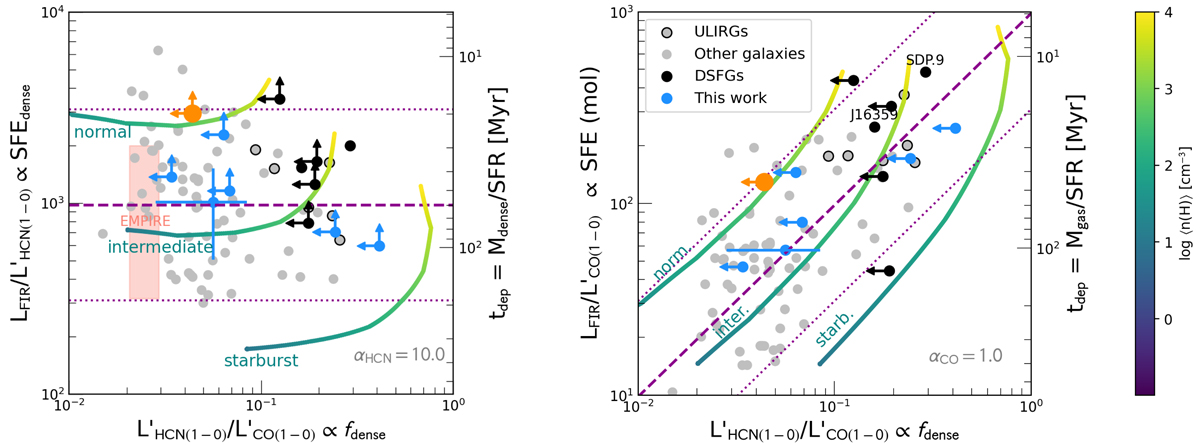Fig. 9.

Download original image
FIR/HCN vs. HCN/CO ratios (left) and FIR/CO vs. HCN/CO (right) ratios for our sample, other high-z DSFGs and selected z ∼ 0 galaxies (Gao & Solomon 2004b; García-Burillo et al. 2012); i.e. star-formation efficiency of the molecular/dense gas versus dense-gas fraction (modulo αCO and αHCN). The purple dashed/dotted lines indicate the Jiménez-Donaire et al. (2019) HCN-FIR relation ±1σ scatter. We calculate depletion times θdep using αCO = 1.0 and αHCN = 10.0 although the actual values vary a factor of a few between different galaxy populations. At a given FIR/CO ratio, DSFGs (and ULIRGs) are systematically offset towards lower HCN/CO. The coloured lines indicate the line ratios for the “normal”, “intermediate”, and “starburst” models of Krumholz & Thompson (2007) as a function of mean cloud density ⟨n⟩. The DSFG stack is consistent with the “normal” model and ⟨n⟩≤103 cm−3, indicating that the bulk of molecular gas in DSFGs is at low densities and/or with a relatively low Mach number.
Current usage metrics show cumulative count of Article Views (full-text article views including HTML views, PDF and ePub downloads, according to the available data) and Abstracts Views on Vision4Press platform.
Data correspond to usage on the plateform after 2015. The current usage metrics is available 48-96 hours after online publication and is updated daily on week days.
Initial download of the metrics may take a while.


